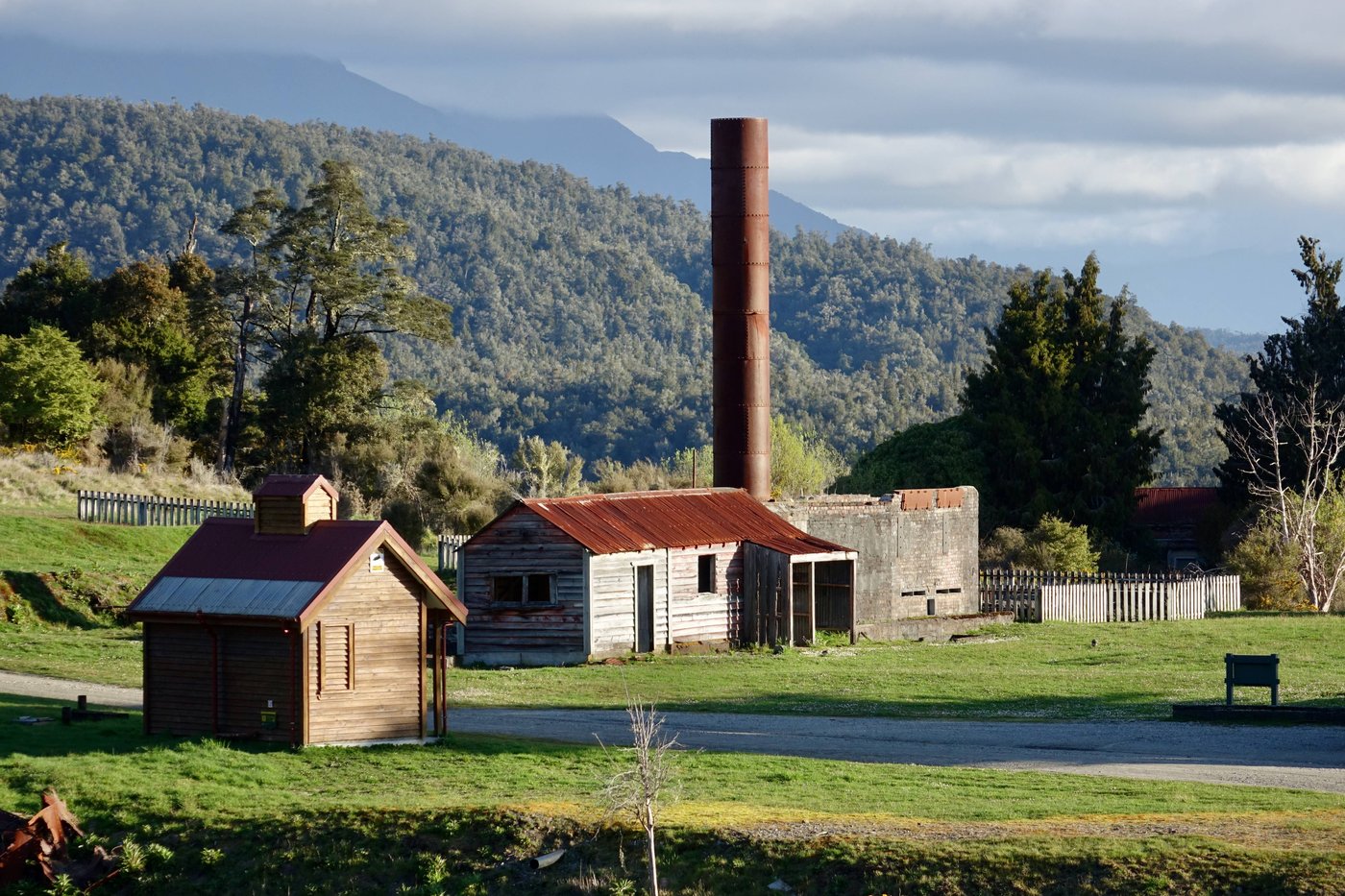
Tohu Whenua
ELECTRIC LIGHTS, HISTORIC MINES, CELESTIAL LEGENDS, GHOST TOWNS …
Tohu Whenua is a visitor programme that promotes Aotearoa New Zealand’s most significant heritage sites. Tohu Whenua are the places that have shaped the country: located in stunning landscapes and rich with stories, they offer some of our best heritage experiences.
There are seven Tohu Whenua sites on Te Tai Poutini the West Coast representing Māori culture, early settlement and mining history. Rich in historical or cultural significance, these places and their stories resonate with meaning. Each site features interpretation panels and marked walks offering memorable experiences and authentic insights into New Zealand culture.
Waiuta
Waiuta is a remarkable relic of early gold mining days, a ghost town now but once a busy mining settlement. Wander the deserted streets among the ruins of this once bustling township, walk up into the hills to see gold mining relics or stay over in the Waiuta Lodge.
The Waiuta quartz mine, in the hills between Greymouth and Reefton, was New Zealand’s third largest gold mine, producing nearly 750,000 ounces of gold worth around NZ$1.6 billion over 40 years.


Reefton
Reefton 'Town of Light' was the first place in the southern hemisphere to provide commercial power and electric street lights. In its mining hey day, as a booming centre of quartz reef gold mining, it was also referred to as Quartzopolis.
Passionate locals have spent the past few years lovingly restoring and repurposing countless heritage buildings, especially along the iconic main street, Broadway.
Denniston Mine
Denniston is known for its terrifyingly steep, 1670-metre-long incline railway — an engineering marvel once described as the 8th wonder of the world. Running on gravity and West Coast grit, the railway transported high grade coal (and workers) down the hill from 1880 until 1967.
The views from above are magnificent and the mining relics are impressive but back in the day there were many hardships for the 1400 residents living on top of the high, exposed rocky plateau.


Brunner Mine
Brunner Mine was New Zealand’s biggest coal producer in the 1880s but is largely remembered for the country’s deadliest workplace disaster which saw 65 men killed in a coal gas explosion. The 1896 tragedy sparked West Coast unionism and better safety legislation, which is why it’s recognised as a Tohu Whenua.
Cross the replica suspension bridge and wander the now peaceful pathways between the industrial ruins which include historic coke ovens, coal wagons, a brick factory and tunnel entrances.
HOKITIKA PORT, COMMERCIAL & GOVERNMENT CENTRE
Pounamu (greenstone) brought Māori traders to the Hokitika region, then gold enticed fortune seekers from all over. Early Māori came on foot around the coast or over the Southern Alps but gold rush era arrivals first had to cross the treacherous river bar where many ships foundered.
Examples of elegant 19th century architecture are visible evidence of the golden wealth that established early Hokitika when some 37,000 fortune seekers arrived at the port in just three years. Recognised as the home of pounamu, Hokitika is a centre for greenstone artists and master carvers.


TE KOPIKOPIKO O TE WAKA
With panoramic views of the Southern Alps and a great vantage point for Fox Glacier, Te Kopikopiko o te Waka — ‘the capsized canoe’ — is an immersive, interactive experience recounting the Ngāi Tahu creation story of how the South Island was formed.
The area is landscaped with a picnic area and walkways accessible for all fitness levels. At the centre is an impressive sculpture of a Māori waka depicting the legend of how Aoraki and his brothers capsized their canoe thus creating the South Island and New Zealand’s tallest mountains.
Ōkārito
A place of harvest, conservation and goldrush, Ōkārito is rich in taonga and home to Te Tai Poutini West Coast's oldest known building and the ancient Ōkārito lagoon.
Surrounded by ocean, estuary, coastal cliffs and lush rainforest, Ōkārito is steeped in legends woven by those who have long been lured to its wild, natural riches and resources - including over 1,500 gold miners in the 1860s.

Whether on foot, waka or wheels, Tohu Whenua has something for every explorer
Follow Tohu Whenua to get travel tips and explore the places where history happened.

